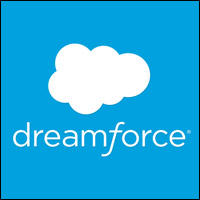More often than you might think, disruptive innovations travel in pairs — at least until they are separated by the markets, which decide one is useful and the other not so much. Sometimes they’re symbiotic. Both may be useful or even necessary — like hardware and software — but that’s not always the case.
Consider the strange pairing of blockchain technology and cryptocurrency. The latter, using the former, tried to insinuate itself into society and the economy as the next big thing in, well, currency.
However, crypto’s reason for being always has been suspect — a currency held apart from government, which, at least since the Renaissance, has been the guarantor of currency stability and value, responsible for its circulation and for management of the money supply. As a result, inflation and debasement have largely been kept in check, except for a handful of notable exceptions.
It wasn’t always that way. Ancient civilizations had no effective way to manage the money supply. Money was minted from gold and silver, which were subject to various forms of debasement.
Blockchain might have helped the ancients, but the invention of fiat currency (paper money) worked well and didn’t require computers. You might say cryptocurrencies helped solve a problem that doesn’t really exist anymore.
Failed Promise
Cryptocurrency and blockchain were supposed to make central banking, with all of its negative “government” associations, unnecessary because the distributed ledger system would act as a traffic cop on transactions. However, that didn’t happen.
Cryptocurrency spawned a wild west marketplace where people got swindled and lost everything or found they couldn’t convert their coins into other stores of value quickly and easily.
The proliferation of currencies also added complexity when markets wanted simplicity. The currencies had rough rides, appreciating in value and then crashing. As their performance over this year shows, they have failed as stores of value, operating more like penny stocks than currencies.
Blockchain has performed well enough, but cryptocurrencies revealed other flaws that the distributed ledger system could not help. The massive losses that virtually all cryptocurrencies and their owners experienced this year have almost killed them as stores of value or means of exchange, in the end, showing that we didn’t need the next big thing in currency after all.
With crypto dealt a near-death blow, blockchain can decouple, and users can apply the technology to real-world problems that don’t involve a need for central banking. There are many.
Serious Potential
Application areas for blockchain are myriad. They include higher education, government, retail, healthcare, food manufacturing, transportation, and even banking. In fact, blockchain is an ideal factor for situations that require strangers to trust each other sight unseen.
Blockchain verifies parties in a transaction, making blind trust less important. Its inherent strength is an ability to track — and, importantly, prove — the provenance of anything.
The greatest first use of blockchain will be in areas dependent on the Internet of Things, or IoT — an important technology of the present and, especially, the future. It involves machines talking to machines, trading, and recording data. These applications are not Star Wars, C3PO-analogs. They will turn up in more prosaic situations.
For example, one machine may order replenishment of its supplies from another so that some production lines can continue operating without interruption. Blockchain can verify the standards and controls applied to the goods involved in any transaction and aid in quality control, all without a great deal of human involvement.
Quality Assurance
The olive oil industry is a simple example because it is rife with counterfeits. The EVOs that people sometimes think they’re buying might be no more than some other vegetable oil with coloring.
It’s not only customers who are defrauded. So are the myriad intermediaries buying and selling products in long chains that begin with small olive growers.
Blockchain can track an olive oil’s route from farm to table, regardless of how many intermediaries are involved. The distributed ledger system captures salient data about the farm, olives, pressing facility and the distribution channel. The ledger is available to all parties in the supply chain and can’t be edited — only added to — so that all the intermediary data is preserved.
Change the industry, and you can apply the same principles to any supply chain. Manufacturers can track raw materials and sub-assemblies from their origins to the customer to assure quality in multiple dimensions. In a product recall, for instance, quickly knowing the provenance of parts can be huge.
In another example, pharmaceutical makers and healthcare providers must be vigilant about the production, care, and storage of biologically active compounds. Large molecules typically found in medicines can degrade over time or through exposure to temperature extremes, rendering them ineffective.
They all have outdates, just like milk on a store shelf. In this case, Blockchain can be a useful measure of drug effectiveness, helping vendors to adjust inventory regimens to maximize utility before expiration.
LIFO (last-in, first-out) and FIFO (first-in, first-out) are less important than new measures of time before expiration.
Consider this: Some amount of human blood expires each day because blood banks are local or, at best regional operations that don’t have the reach to query inventory and readjust distribution. Blockchain could help the industry better utilize this resource.
New Stories to Tell
As blockchain enters the mainstream, we hear much less about cryptocurrencies because the two are decoupling. With the frothy promises debunked, independent actors in the marketplace have been discovering the true uses and benefits of this new technology.
Most vendors have a blockchain story to tell, and Oracle and Salesforce likely will expand their thinking and product lines at their respective events this fall.


























































Social Media
See all Social Media